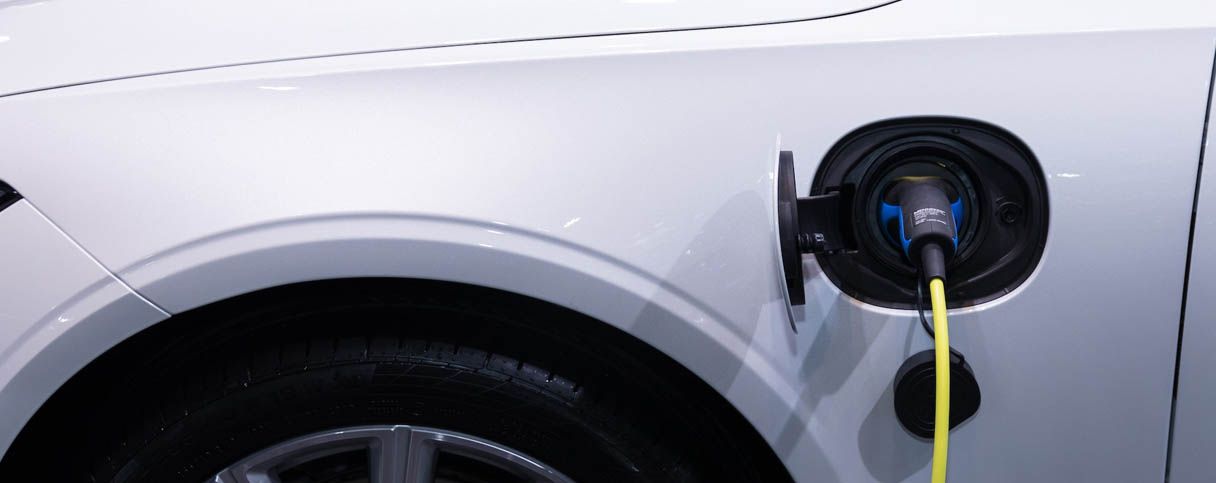
Electric car
Charging an electric car in the garage: Your garage as a charging station
Wood rather than plastic. Repair rather than buying new. Eat local groceries rather than food that has to travel around the globe. Sustainability is on trend; in fact, it’s very much the order of the day. That’s one key reason why garages are also becoming increasingly modern, smart and eco-friendly. It starts with meticulous planning, to ensure the garage is sited optimally on the plot, and culminates in a contemporary implementation. With sustainable materials, energy-saving operator systems and durable garage doors that require little maintenance. Moreover, garages are increasingly being used to house electric cars. But: They need power, which is why many people are installing a charging station at home to be able to charge their electric car in the garage. The blog post provides a brief summary of the points to consider.
Clarify the legal requirements
If you decide to install an at-home charging station for your electric car, you should first clarify the legal situation. Home owners with their own garage can set up a system in line with their needs. Depending on the country, area and relevant laws, tenants and apartment owners are sometimes also entitled to a charging station if they have rented a parking space in an underground garage or a dedicated garage. The first thing to do is to check your rent agreement, talk to your housing cooperative, or consult your local authority.
Planning a charging station in your garage
The next step is to clarify everything that needs to be modified or prepared in the garage to turn the dream of an at-home charging station (wallbox) into reality. Will you need to re-lay cables, or even break through walls? Is your vehicle’s parking space close enough to the charger? Is there enough space for the charger on the wall? Also bear in mind: An electric car and a charging station are valuable assets, and add value to your home. But they are also coveted targets for thieves. So review your garage’s security and upgrade it if necessary, to keep thieves out. A secure, modern garage door and an alarm system are essential. You should then leave the installation of the wallbox itself to a professional. After all, there's nothing more annoying than having to completely remove the system again, being confronted with an overheated unit, or having failed to check the mains power supply. Because you need to be aware: A wallbox has no direct mains connection, meaning it has to be connected to a separate circuit. And you’ll have to notify your power company of it. You can also connect your electric car charging station to a photovoltaic plant. Generating your own electricity and using it to drive around will then quickly become a reality.
Finding the right wallbox
Then there is the matter of finding the right charging system. To do so, you first need to know what type of charger is installed in your electric car, and which plug you need. Electric car battery capacity currently ranges from a few kWh to over 100 kWh, depending on the model. Charging power also varies, from 3.2 kW to 22 kW. The range of an electric car on a full charge is between 120 and 500 kilometres. The Type 2 plug has become the standard in Europe. So all in all, the point is: Not all electric cars are the same. And that’s true of wallboxes, too. They also come in different variants. Depending on the model, charging systems are equipped with one or two charging points for AC voltage, and charge at different speeds. Most of them are now capable of fully charging batteries overnight however. But bear in mind: The capacity of the car battery or the ambient temperature can also influence the charging process.
Calculating charging time
You can use the following formula as a rough guide to determine the charging time of your electric car: Divide your electric car’s battery capacity by its charging power. For example, if you drive a Fiat 500e with a battery capacity of 24 kWh and a charging power of 7.4 kW, it will take about 3.25 hours to fully charge the car. Our tip: If you need to lay a new cable in the garage for your wallbox, configure the installation for as many kilowatts as possible right from the start – that means at present a maximum of 22 kW. This will reduce the risk of having to upgrade your system in the foreseeable future.